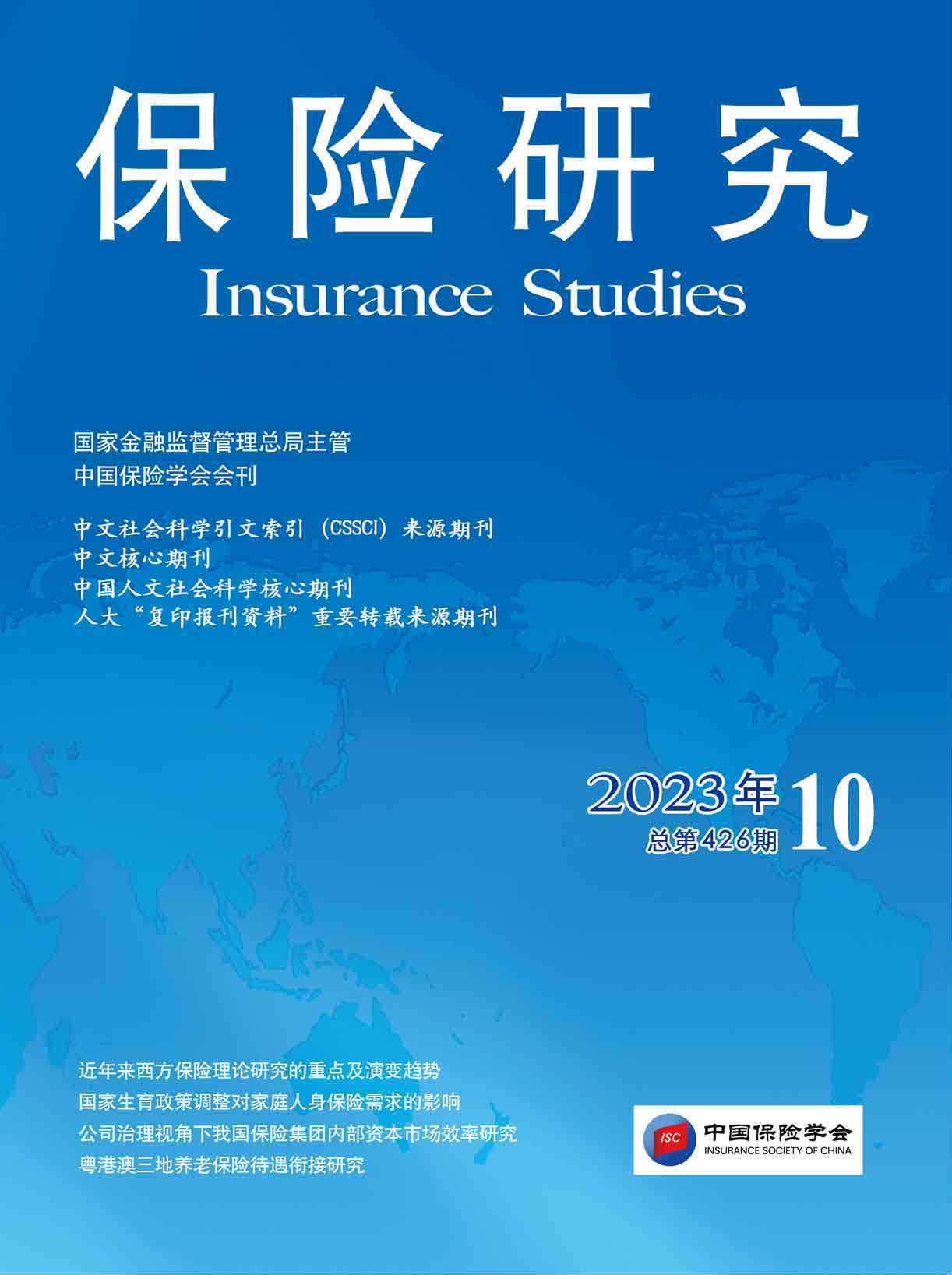
《保险研究》20231002-《国家生育政策调整对家庭人身保险需求的影响》(孙伟、张慧丽)
[中图分类号]F842.4 [文献标识码]A [文章编号]1004-3306(2023)10-0020-20 DOI:10.13497/j.cnki.is.2023.10.002
资源价格:30积分
- 内容介绍
[摘 要]为应对人口老龄化挑战,促进人口长期均衡发展,我国自2013年以来已经进行了数次全国性生育政策调整。人口数据显示,国家生育政策调整虽然未能迅速扭转人口出生率的下降趋势,但是有效促进了“二孩及以上”生育率,导致政策受益家庭的孩子数量上升、少儿抚养比提高和家庭规模增大。家庭人口结构的变化也影响了家庭对人身保险的需求。基于各省级行政区实施和调整生育政策所提供的“准自然试验”框架,本文利用2005~2018年的省级面板数据和双重差分方法考察了国家生育政策调整通过改变家庭中孩子数量从而对家庭人身保险需求造成的影响。研究发现,“单独二孩”政策导致原“一孩”和“一孩半”生育政策地区的户均实际人身险保费收入相比于原“二孩”生育政策地区分别降低了17.4%和10.0%。这说明家庭内部保障的替代效应和父母养育更多子女的收入效应共同挤出了家庭的部分商业人身保险需求。进一步从细分险种来看,相比于原“二孩”生育政策地区,原“一孩”和“一孩半”生育政策地区的户均投资理财型人身险保费收入明显降低,同时原“一孩”生育政策地区的户均风险保障型人身险保费收入有所升高,显示父母在购买人身保险时同时存在利己和利他动机。综合来看,随着人口数量开始下降,人身保险业务将在未来一段时间内同时面临人口和家庭基数下降,以及户均人身险保费收入降低的双重挑战。
[关键词]家庭人身保险需求;生育政策调整;替代效应;收入效应;双重挑战
[基金项目]本文获得了教育部人文社会科学研究规划项目资助(项目批准号:22YJA790052)。
[作者简介]孙伟,中国人民大学财政金融学院副教授;张慧丽(通讯作者),中国人民大学财政金融学院博士研究生。
The Impact of National Fertility Policy Adjustments on Households′ Life Insurance Demands
SUN Wei,ZHANG Hui-li
Abstract:To address population aging and maintain long-term population balance,China has made several adjustments to its fertility policies since 2013.While the population data shows that the adjustments have not rapidly reversed the declining trend in the birth rate,they have effectively raised the two-and-above-child fertility rate,resulting in an increase in the number of children,a higher child dependency ratio,and a larger family size in households benefiting from the adjustments.These changes in family demographics also influence households′ demands for life insurance.Based on the “quasi-natural experiment” framework provided by the implementation and adjustments of fertility policies in different provinces,this paper uses 2005-2018 provincial panel data and employs a difference-in-differences approach to investigate the impacts of the policy adjustments on households′ demands for life insurance due to changes in the number of children in the households.This paper finds that,compared with the former “two-child” policy areas,the real per-household life insurance premium income in the former “one-child” and “one-and-a-half-child” policy areas has declined 17.4% and 10.0% on average,respectively,after the implementation of the “selective two-child” policy.This suggests that the substitution effect of family security and the income effect of parents raising more children together crowd out part of households′ commercial life insurance demand.Further analysis by product types shows that,compared with the former “two-child” policy areas,the investment type of insurance premiums per household of the former “one-child” and “one-and-a-half-child” policy areas decrease significantly,while the risk-oriented premiums per household of the former “one-child” policy areas increase to some extent,indicating that both egocentric and altruistic motives exist when parents make life insurance purchase decisions.As the population began to decline in 2022,the life insurance industry faces dual challenges from both the decreasing population and households and the reduced demand for life insurance among households.
Key words:life insurance demand;fertility policy adjustments;substitution effect;income effect;dual challenges
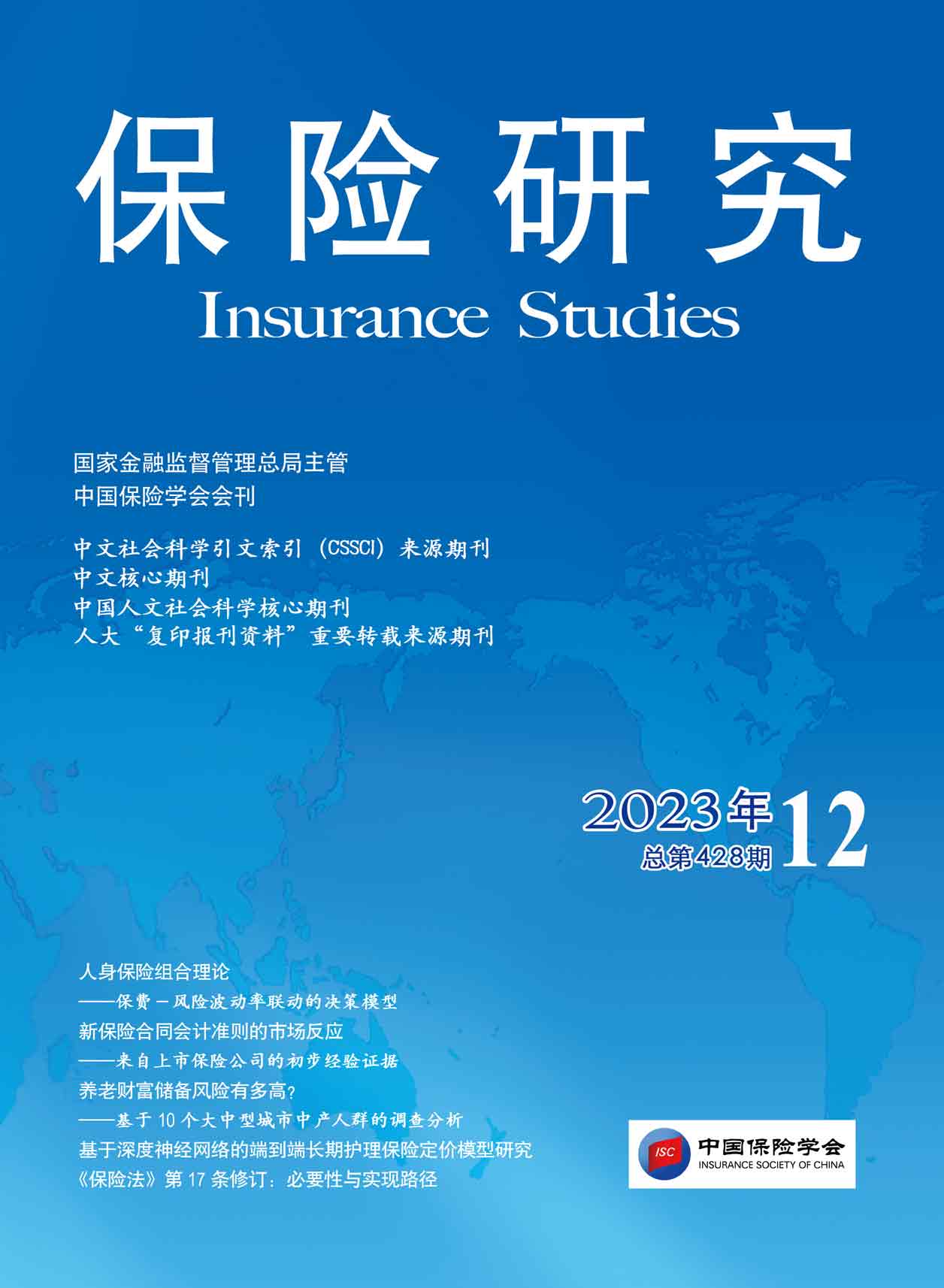
《保险研究》20231201-《人身保险组合理论——保费-风险波动率联动的决策模型》(张程、范雨文、曹铸、王洪彬)
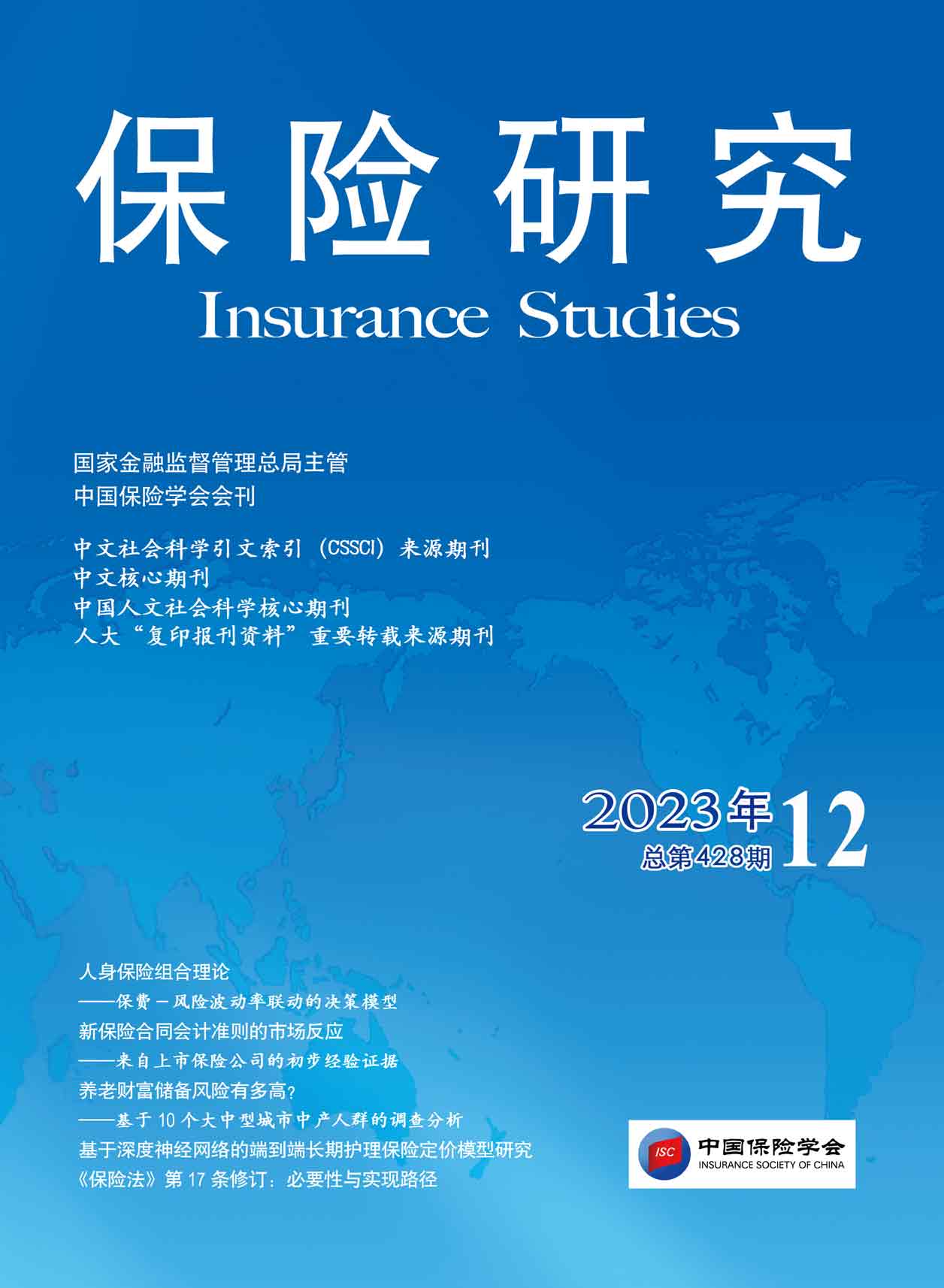
《保险研究》20231202-《新保险合同会计准则的市场反应——来自上市保险公司的初步经验证据》(彭雪梅、段伊雪、王佳)
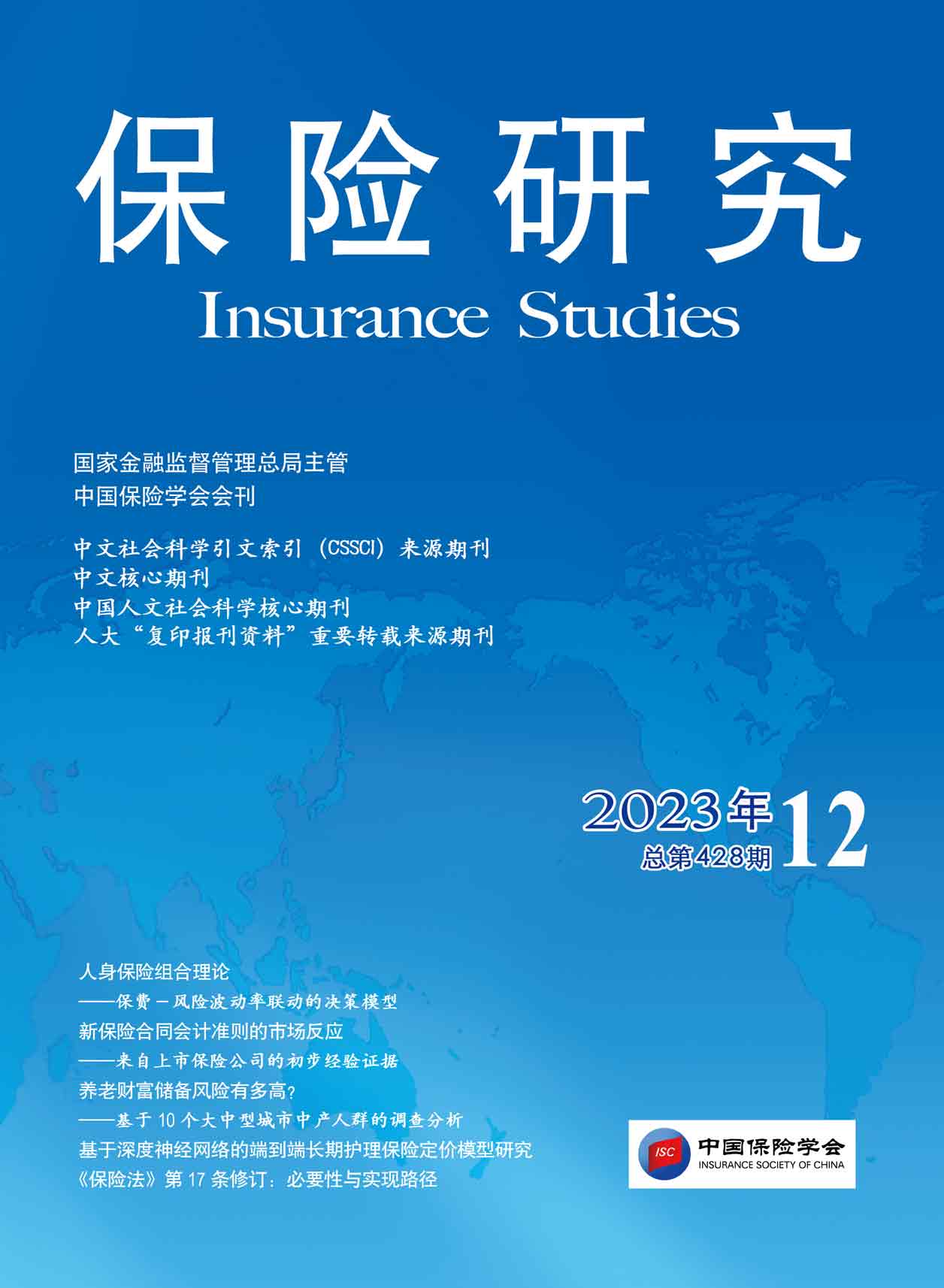
《保险研究》20231203-《套期保值效果与“保险+期货”赔付合理性——基于玉米和大豆试点项目的实证分析》(鞠荣华、顾巧静)
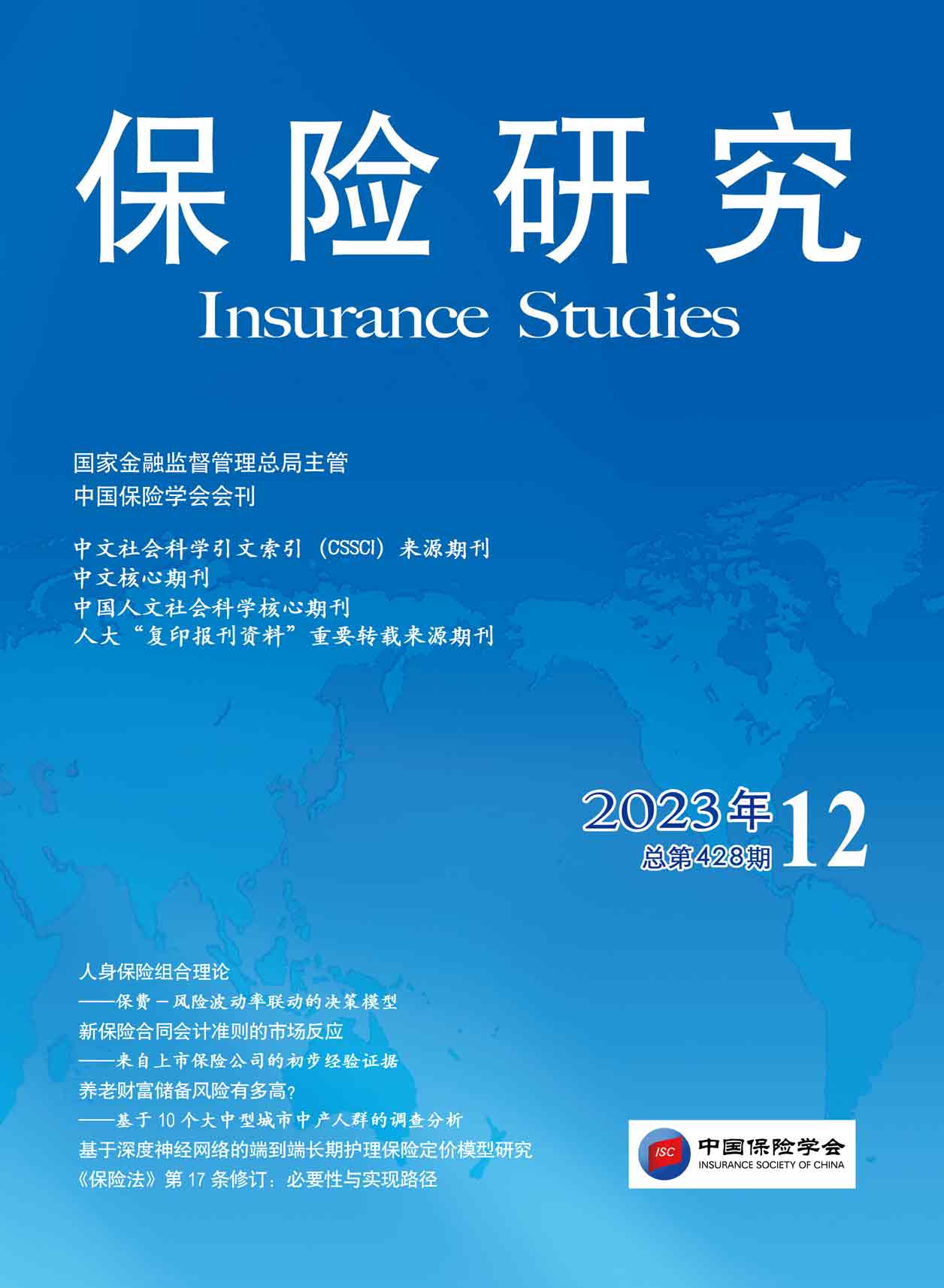
《保险研究》20231204-《养老财富储备风险有多高?——基于10个大中型城市中产人群的调查分析》(冯扬、房连泉)
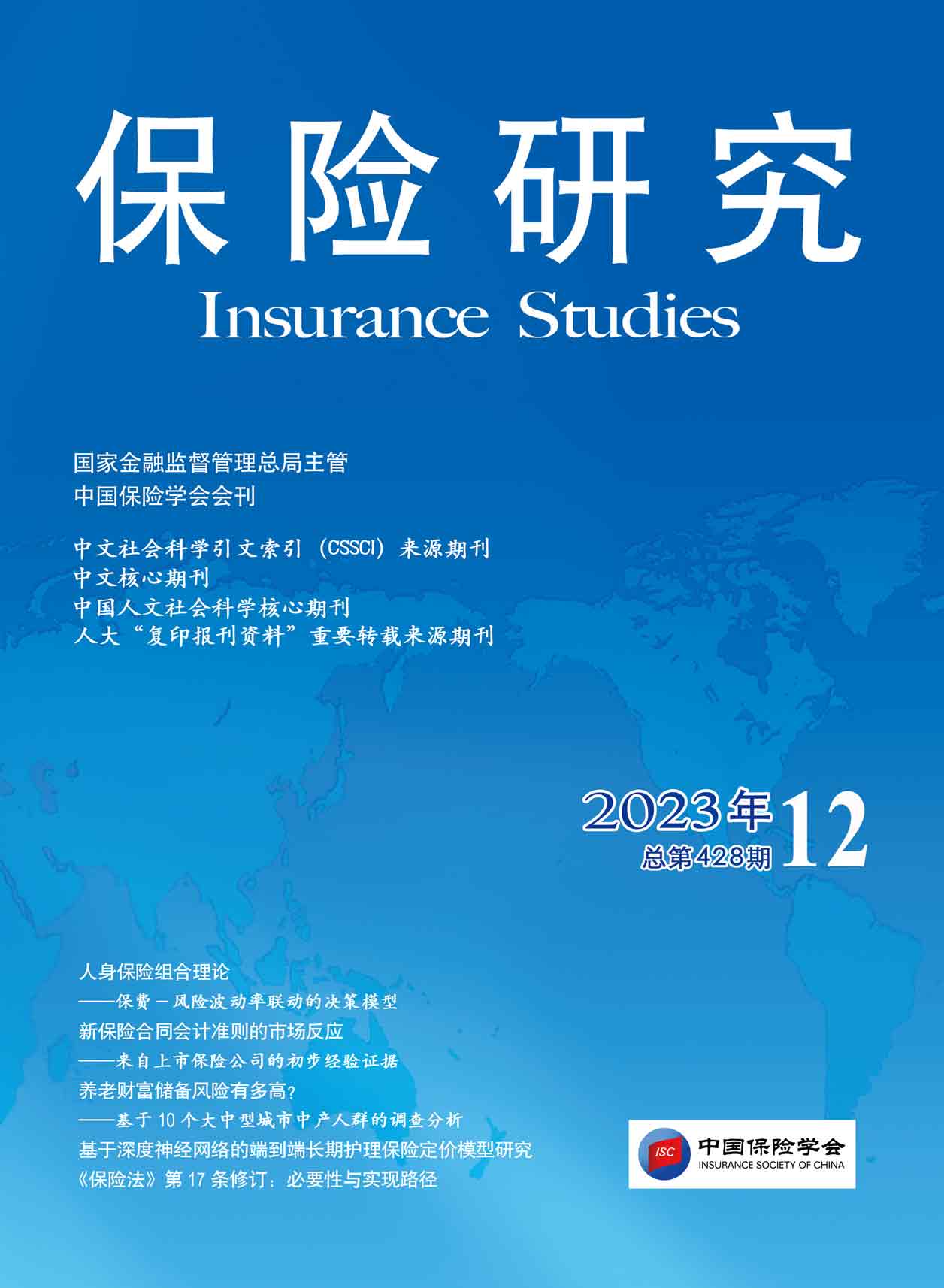
《保险研究》20231205-《社保基金持股对企业ESG改善的实证分析》(杜秋萱、姜岩、侯德帅)
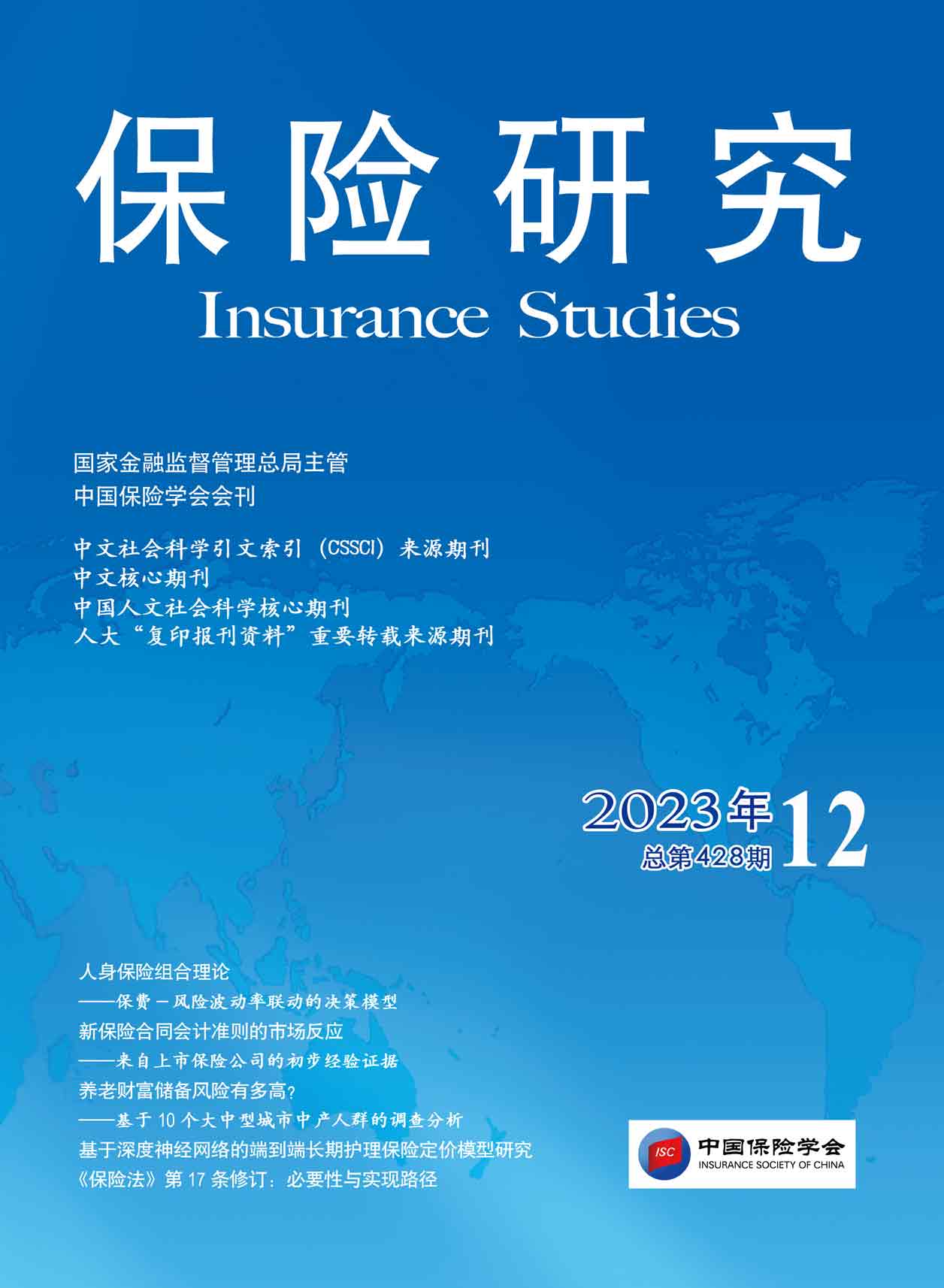
《保险研究》20231206-《基于深度神经网络的端到端长期护理保险定价模型研究》(仇春涓、刘守贤、 张楠)
